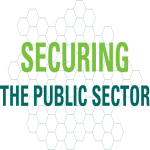|
09.30 - 09.35
|
Chair's welcome
|
|
09.35 - 09.50
|
►Improving public sector resilience at scale A representative from NCSC - Improving cyber decision making and increase cyber accountability
- Resilience against common threats through Cyber Essentials
- Addressing identity issues through increasing the uptake of strong authentication, such as FIDO authenticators including passkeys
|
|
09.50 - 10.05
|
►Building a New Approach to Government and Public Sector Cyber Security Alex Harris, Head of Future Cyber Capability, Cabinet Office - An honest review of the current state of government and public sector cyber security.
- Creating a joined-up approach to government and public sector cyber security.
- Meeting the cyber challenges of the future.
|
|
10.05 - 10.25
|
►Rapid NCSC CAF Compliance: Deploying Enterprise PAM in Days with Silverfort Peter Batchelor, Regional Director UK&I, Silverfort
Elliott Morgan, Cyber Lead for the NHS and Regional Services, Trustmarque (on behalf of Silverfort) - See proven Public Sector results with case study examples of how Trustmarque and Silverfort have helped government teams achieve CAF compliance with minimal disruption and cost
- Learn how to extend MFA “Everywhere” to legacy systems, on-premises environments
- Learn how to automatically detect and protect service accounts and cloud non-human identities
- Learn how to deploy Just-in-Time, access - Enforcing time-bound privileged access that meets CAF controls without the overhead of legacy PAM
- Learn how to deliver identity zero trust, stop lateral movement, and protect against 3rd party / supply chain cyber-attacks
|
|
10.25 - 10.30
|
►From Reactive to Resilient: Cyber Resilience for Public Sector Operations
Shifting the mindset from prevention to resilience in cybersecurity Gerard Thompson, Chief Information Security Officer, North Tyneside Council - Why resilience matters more than ever in critical public services
- Integrating continuity planning, cyber hygiene, and adaptive security
- Metrics for resilience: what should leaders actually measure?
- Real-world frameworks for building institutional muscle memory
|
|
10.30 - 10.40
|
Comfort break
|
|
10.40 - 11.00
|
►To ‘DAIR’ is to do – Rethinking Incident Response Frameworks for Modern Teams Matthew Holland, Incident Response Team Lead, Royal Navy - Explore PICERL – Gain insights into the current industry-standard incident analysis framework, understanding both its strengths and its limitations
- Discover DAIR – Introduce a modern, agile alternative designed to enhance collaboration, adaptability, and continuous learning
- Compare & Apply – Analyse a real-world incident through both lenses to reveal how DAIR can drive deeper insights and more effective outcomes than PICERL
|
|
11.00 - 11.20
|
►Evolving from Secure-by-Design to Secure-by-Default - improving cyber resilience John Keegan, Deputy Director, Head of Digital Security, Department for Work and Pensions (DWP) - Operational and architectural shifts required to move from Secure-by-Design to truly enforceable Secure-by-Default implementations
- Integrating Secure-by-Default principles into CI/CD pipelines, infrastructure-as-code, and zero trust enforcement at scale
- How Secure-by-Default enhances resilience by reducing attack surfaces, enforcing least privilege, and eliminating insecure defaults across complex environments
|
|
11.20 - 11.40
|
►Cyber Essentials: Simple Steps, Stronger Security Dr Emma Philpott, Director and CEO, IASME - What's it all about?
- Effectiveness and Impact
- Overcoming challenges for large organisations meeting such a prescriptive standard
- Using Cyber Essentials as a Supply Chain Tool
|
|
11.40 - 11.45
|
Chair's closing remarks
|
